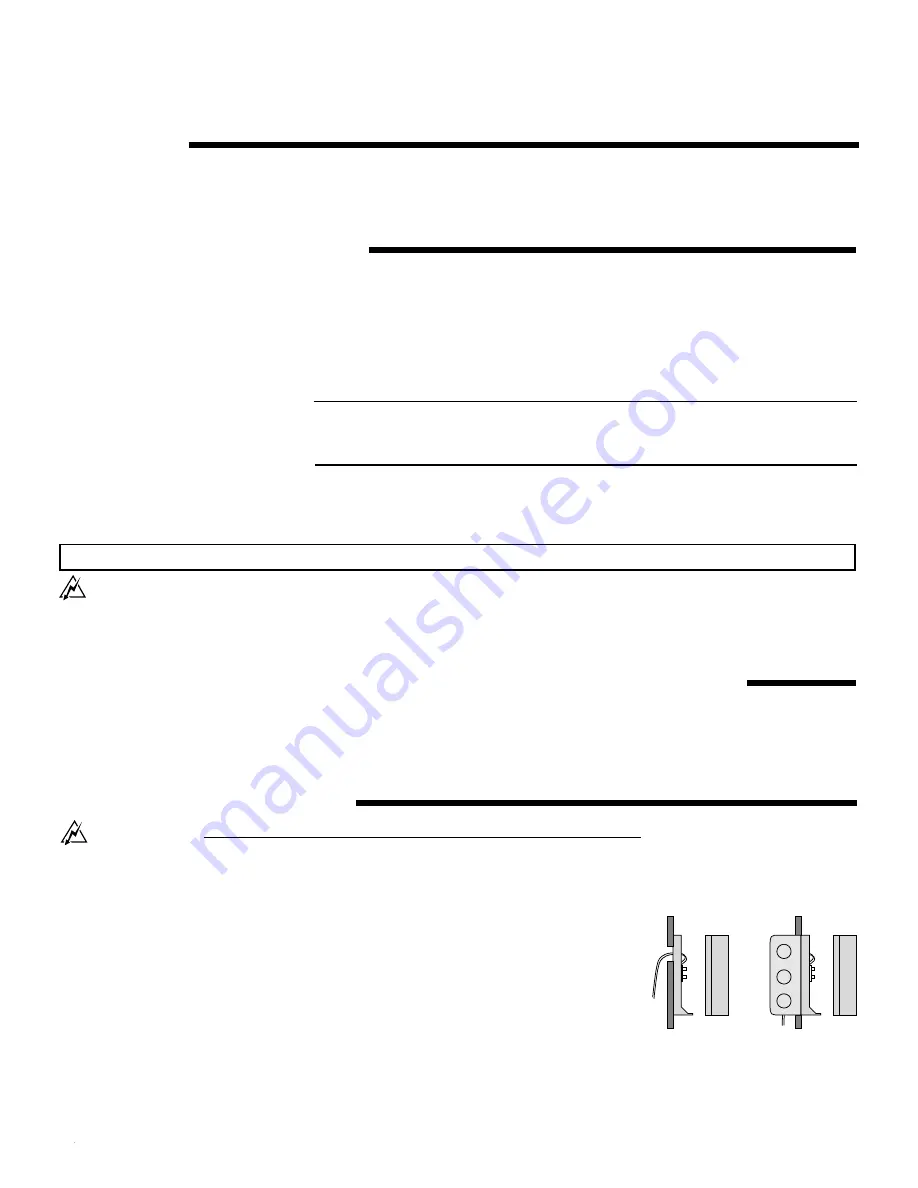
8
water temperature rises 1/2 of the differential above the required boiler supply temperature. If the differential is too wide, there can
be large supply water temperature swings; however, if the differential is too narrow, the boiler short cycles and operates ineffi-
ciently. This control automatically calculates the boiler differential in order to achieve an appropriate balance between temperature
swings and boiler efficiency. This also permits the control to adapt to changing loads and conditions.
The RMC only operates the boiler once the output of the injection circulator exceeds 10% of flow.
B
BOILER ENABLE
When the RMC “Enables” the boiler, the RMC opens and closes the boiler contact based on the output of the variable speed injection
pump. The actual temperature and cycling of the boiler is then determined by other controls or the aquastats on the boiler itself.
When operating in the boiler enable mode, the boiler contact turns on once the variable speed output exceeds 25%. The boiler
contact shuts off if the output of the variable speed drops below 5% for more than three minutes or if the demand is removed from the
RMC.
BOILER PROTECTION (BOILER MINIMUM)
Cool water is often returned to the boiler from low temperature radiant floor heating systems or when the heating system is recovering
from night setback. This cool boiler return water may cause the boiler to operate at such a low temperature that the flue gases
condens
H
. Alternatively, when the boiler surfaces are hot due to previous loads such as domestic hot water generation, the large
temperature difference (Delta T) between the boiler and its return water can cause the boiler to become thermally shocked. Proper
protection of the boiler under these circumstances is required.
When a boiler sensor is connected to the control, the RMC is capable of providing boiler protection. When providing boiler protection,
the RMC limits the output of the variable speed injection pump in order to reduce the amount of cool water being returned to the boiler.
This allows the boiler temperature to increase to a point that avoids flue gas condensation.
B
Boiler Protection with Boiler Enable
When the Boiler Sensor is set to the “Return” setting the control begins to back off the variable speed injection pump when the
boiler temperature drops below the Boiler Minimum Setting.
Boiler Protection with Boiler Control
When the Boiler Sensor is set to the “Supply” setting the control begins to back off the variable speed injection pump when the
boiler temperature drops 1/2 of the Differential below the Boiler Minimum Setting.
Note:
If a boiler sensor is not installed, the RMC cannot provide boiler protection.
C
CAUTION
Improper installation and operation of this product could result in damage to the equipment and possibly personal injury. It is your
responsibility to ensure that this product is installed in a safe manner according to all of the applicable codes, standards and instruc-
tions. The electronic control contained in this product is not intended as a primary limit control. Removal of the PC Board from its
enclosure can result in damage to the control and possibly even personal injury. Refer to qualified personnel for servicing.
S
Set Up of Radiant Mixing Control
STEP ONE - REMOVING THE RADIANT MIXING CONTROL FROM THE RADIANT MIXING BLOCK
• Remove the screw from the front of the control.
• Grasp the front of the control and remove it from the green plastic enclosure surrounding the injection mixing block.
• Wiring to the control is connected to the back of the circuit board using either the indicated spade connectors, molex connectors or
the snap on terminal plugs. These may need to be disconnected to fully remove the control.
STEP TWO - INSTALLING THE SENSORS
Outdoor Sensor
Note:
The temperature sensor is built into the plastic enclosure.
If the Radiant Mixing Block is to be used in the outdoor reset mode, the Outdoor Sensor must
be installed. If the Radiant Mixing Block is to be used in either the setpoint or a delta T mode,
the Outdoor sensor is not required and does not need to be installed. (See pages 5 to 7 for a
complete description of the available modes.)
• Remove the screw from the center of the sensor and pull the front cover off of the sensor.
• The outdoor sensor can either be mounted directly to an outside wall or onto a standard
electrical box. Wiring can enter the sensor either through the bottom or the back of the plastic
enclosure.
• The sensor should be mounted on a wall which best represents the heat load on the building
(i.e. a north facing wall for most buildings and a south facing wall for building with a large south
facing glass area). The sensor should not be installed near heat sources such as exhaust
vents or window openings.
• The sensor should be installed at an elevation above the ground that will prevent accidental
damage or tampering.
• Ensure that the sensor is installed in a sheltered location out of direct sunlight and rain.
• Connect a two conductor wire to the terminal block in the Outdoor Sensor and run the wires
from the Outdoor Sensor back to the Radiant Mixing Control’s location.
I
Summary of Contents for Radiant Mixing Block
Page 2: ...2 Typical Piping ...


































